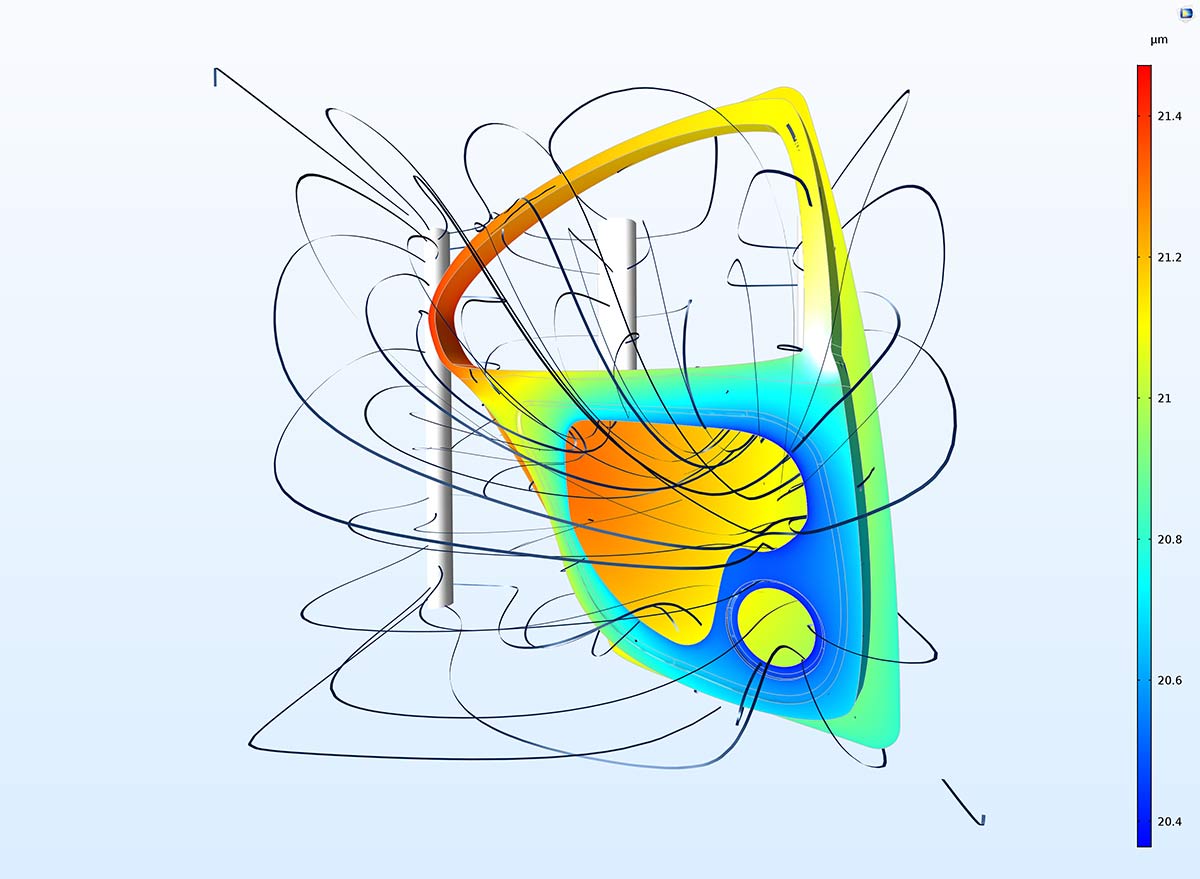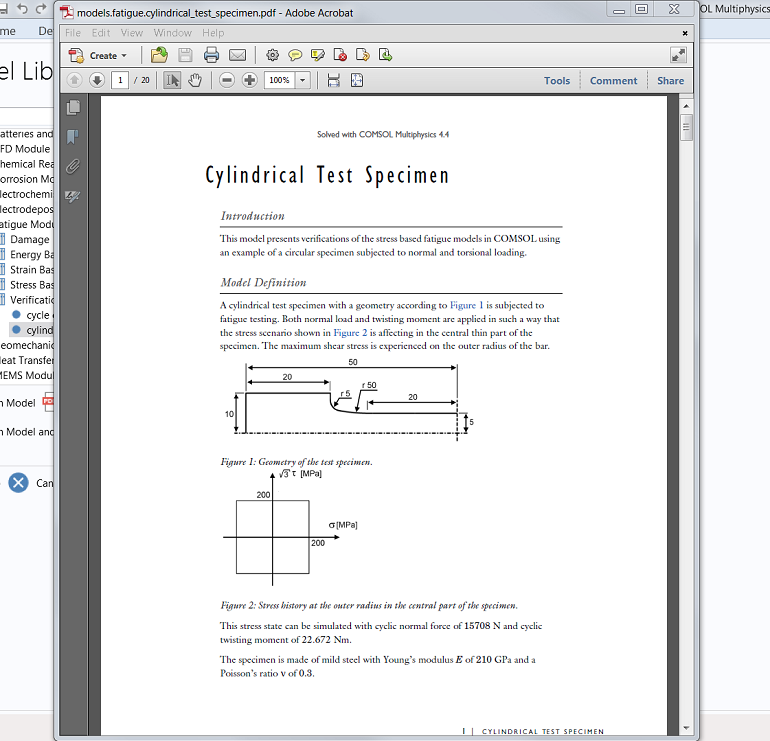

In the Induction Motor Vibration tutorial model, eddy currents are induced in the rotor by time-harmonic currents in the stator windings and rotation of the rotor. The frequency spectrum of the normal acceleration at one of the points on the gearbox is also shown (bottom-left).Īpplication Library path: Multibody_Dynamics_Module/Automotive_and_Aerospace/gearbox_vibration_noise New Tutorial Model: Vibration in an Induction Motor
COMSOL 5.3 TUTORIAL MANUAL
The stresses in the gearbox housing and the sound pressure level in the surrounding air (top and bottom-right) of a 5-speed synchromesh gearbox inside a manual transmission vehicle. Note: This model also requires the Acoustics Module. An acoustics analysis is then performed in order to compute the sound pressure levels in the near, far, and exterior fields. The normal acceleration of the gearbox housing is converted to the frequency domain, which is to be included as a source of noise. A transient multibody dynamics analysis computes the gearbox vibrations for the specified engine speed and external load. This tutorial model illustrates the modeling of vibration and noise in a 5-speed synchromesh gearbox inside a manual transmission vehicle. The plot shows the von Mises stresses.Īpplication Library path for an example of rigid body motion suppression: Structural_Mechanics_Module/Thermal-Structure_Interaction/heating_circuit New Tutorial Model: Vibrations and Noise in a Gearbox Applying a Rigid Motion Suppression condition ensures that the model has sufficient constraints for a correct solution. Solid Mechanics (3D, 2D, 2D axisymmetric)Ī heating circuit deforms due to thermal expansion in this example.The Rigid Motion Suppression condition is available for the following physics interfaces: This feature automatically applies a set of suitable constraints based on the geometry model and physics interfaces.

Now, the new Rigid Motion Suppression condition can be used for these types of analyses. Self-equilibrating models can be analyzed as long as the specifications of the constraints fulfill the following conditions: rigid body motions are not possible and no reaction forces are introduced. In cases where loads are self-equilibrating, the actual locations of where the required constraints are placed are not relevant. Automatic Suppression of Rigid Body Motion This will reduce the number of degrees of freedom when using structured meshes with higher-order elements in flexible domains. When modeling flexible parts in the Multibody Dynamics interface, you can choose to discretize by serendipity shape functions. Discretize by Serendipity Shape Functions This avoids having to change and reselect the joint node in the respective domain and Settings window. You can now use an Attachment option on a rigid domain, making it easier to switch between a rigid representation and an elastic representation. This is useful for extracting system matrices represented in a modal base for large multibody dynamics models. The Modal Reduced Order Model study type is now supported in the Multibody Dynamics interface. View screenshot Modal Reduced Order Model Study Type Similarly, the two gears in a Gear Pair node and the two parts joined in a Spring-Damper node will also be highlighted when you select those corresponding nodes. This provides feedback on the correctness of the source and destination selections. When you select a Joint node in the model tree, the selected objects are now automatically highlighted in the Graphics window. When working with complex assemblies in the Multibody Dynamics interface, there may be many joints where each contains the selection of two rigid domains or attachments.


Highlighting Selections in Multibody Dynamics Analyses Learn more about these tutorials and other multibody dynamics modeling improvements below. For users of the Multibody Dynamics Module, COMSOL Multiphysics ® version 5.3 brings a tutorial model that combines multibody dynamics with acoustics to simulate noise in a gearbox as well as a tutorial that combines the Multibody Dynamics Module with the AC/DC Module to simulate an induction motor.


 0 kommentar(er)
0 kommentar(er)
